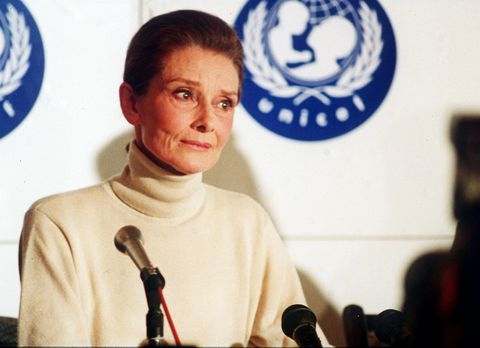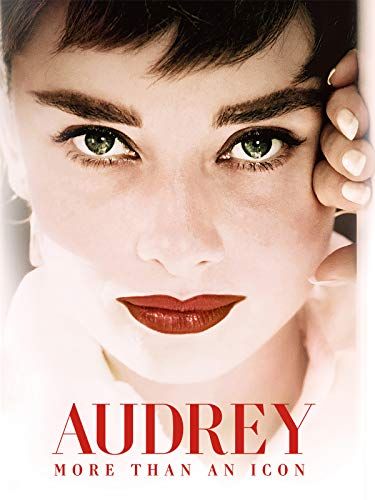
Pictorial Press Ltd / Alamy Stock Photo
Ask any Audrey Hepburn fan what they love most about her, and you’ll get a variety of responses: her undeniable beauty and imitable style. Her magnetic presence on film. Her girl-next-door appeal. For so many of her fans, especially women, she wasn’t just a glamorous movie star and humanitarian—she was the embodiment of perfection. But in Audrey, director Helena Coan’s enthralling new documentary, the late superstar’s flawless veneer gently drops away to reveal something far more stirring: authenticity.
“Success is very much in the eye of the beholder,” Hepburn says in the film, her words culled from interviews and media appearances throughout her lifetime. It’s an intimate detail nestled at the center of a 100-minute narrative about the woman behind the celebrity, someone whose image of herself was much less complex than how others perceived her. Featuring commentary from fellow actors and filmmakers including Richard Dreyfuss and Peter Bogdanovich, as well as family and close friends who examine her influence in fashion and cinema, Audrey primarily tells Hepburn’s story in her own words—and they’re often in contrast to her legacy.
For instance, her affinity for designer clothes immortalized in movies such as Breakfast at Tiffany’s (like that gorgeous black Givenchy column gown she wears in the opening credits) was often a mask for her insecurities that stemmed, in part, from feeling like an outsider in Hollywood. “Clothes always give me a great deal of self-confidence,” Hepburn says.
With reflections on her childhood growing up across Belgium, England, and the Netherlands amid the horrors of World War II, Coan depicts a girl who once nearly starved from lack of food. When the teen started making a little money through her first love, dancing, in Amsterdam, French novelist Colette plucked her from virtual obscurity to play the titular role in Broadway’s Gigi. That major part, along with her astonishing charisma in front of an audience, catapulted the somewhat shy Hepburn to superstardom in the 1950s and ‘60s—and gave her a whole new complex about herself.
“Of course, you would feel pressure if you come onto the scene completely new,” Lauren Conlin, a longtime Hepburn fan and host of the entertainment podcast Red Carpet Rendezvous, tells ELLE.com. “All you wanted was to be a ballet dancer, and all of a sudden, you’re onscreen and on Broadway. You feel the pressure to be perfect in every way and want everyone to like you and want to work with you.”
This was only exacerbated by Hepburn’s legions of fans, who to this day emulate her style and fawn over her legacy. “She looks so fabulous and stylish on that iconic Breakfast at Tiffany’s poster,” Conlin says, recalling her introduction to Hepburn as a child. “It was like every little girl wanted to be her.”
But as Audrey shows, lasting admiration from around the globe couldn’t counteract how the actress felt about herself. “I was always self-conscious,” she admits, adding that, along with success, “beauty is in the eye of the beholder. This is something I can’t see. I see the problems when I get up in the morning.” She rattles off all the things that wishes she had: smaller feet (she wore size 10½), a curvier figure (à la the equally idolized Marilyn Monroe), and blonde hair.
These small but important self-reflections not only provide a more honest portrayal of a woman whose public image nearly eclipsed who she really was, but they also crack the rigid mold of aspiration with which Hepburn is often aligned. Not in a contrived, “celebrities—they’re just like us!” kind of way, but rather a portrait of what it’s like to be a woman in any era, fighting an endless battle of who we are versus how the world sees us. During Hepburn’s time, her image was complicated by the perception of women as wives and homemakers—not the delightful hodgepodge of female characters she embodied, from a sex worker in Breakfast at Tiffany’s to a childless widow who sweeps Cary Grant off his feet in Charade.
Because of these roles, women wanted to be Hepburn and men wanted to be with her. But in reality, she was unlucky in romance, having divorced twice: first from Mel Ferrer, then Andrea Dotti, who was photographed cheating on her many times. Audrey ponders how the actress’s father abandoning his family when she was a child might’ve propelled her to search for love from men in her adult life, but it’s also possible she unwittingly succumbed to the romantic fantasy that came with her celebrity—and was heartbroken when she realized it wasn’t true.
As private as Hepburn could be, she seemed to understand the connection she had with her fans and tried to be as candid as possible about her experiences, including her “traumatic” miscarriages, in interviews: “You hope that things will come back together again, but it wasn’t always true,” she says.
It should come as less of a surprise than it did that Hepburn took a break from the spotlight at the height of her career following her 1967 film Wait Until Dark. As much as she enjoyed what she did for a living—“I’m a very lucky girl,” she proclaims in Audrey—the love she had for her family superseded that. Hepburn had one son with each of her husbands, and with motherhood came a confidence she never had to feign as a UNICEF Goodwill Ambassador in her later years. “I’m [traveling] around the world again, but I love to do it,” she says during a media appearance captured in the documentary.
Hepburn confronted challenges both in front of and away from the camera, and Audrey shows she’s an icon not because she’s the archetype of what every woman should be. Rather, despite her overwhelming success and personal struggles, she remained her truest self—and gave back to the world around her. We’re all capable of that.
This content is created and maintained by a third party, and imported onto this page to help users provide their email addresses. You may be able to find more information about this and similar content at piano.io



